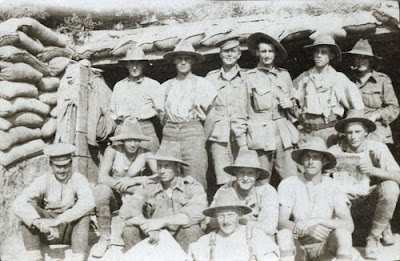 |
| On the left is Leonard Seymour, and on the right is Henry Kaufman, winter 1916-17. |
Henry arrived in France in time to suffer the extreme cold of the winter of 1916-1917, becoming ill in February and returning to England for a few months. In June 1917 he returned to France and was engaged with his battalion in and out of front line duty for the next six months until he became seriously ill with pulmonary tuberculosis and Bronchitis. He returned to England, and then to Australia where he was discharged in April 1918. Henry then resumed his previous job as a Military Staff Clerk.
But somewhere in darkest Queensland a Labor MP raised the question of enemies of birth or descent being employed in the Defence Department. Henry got caught up in this net of suspicion. You can read the full story on The Empire Called and I Answered website.













